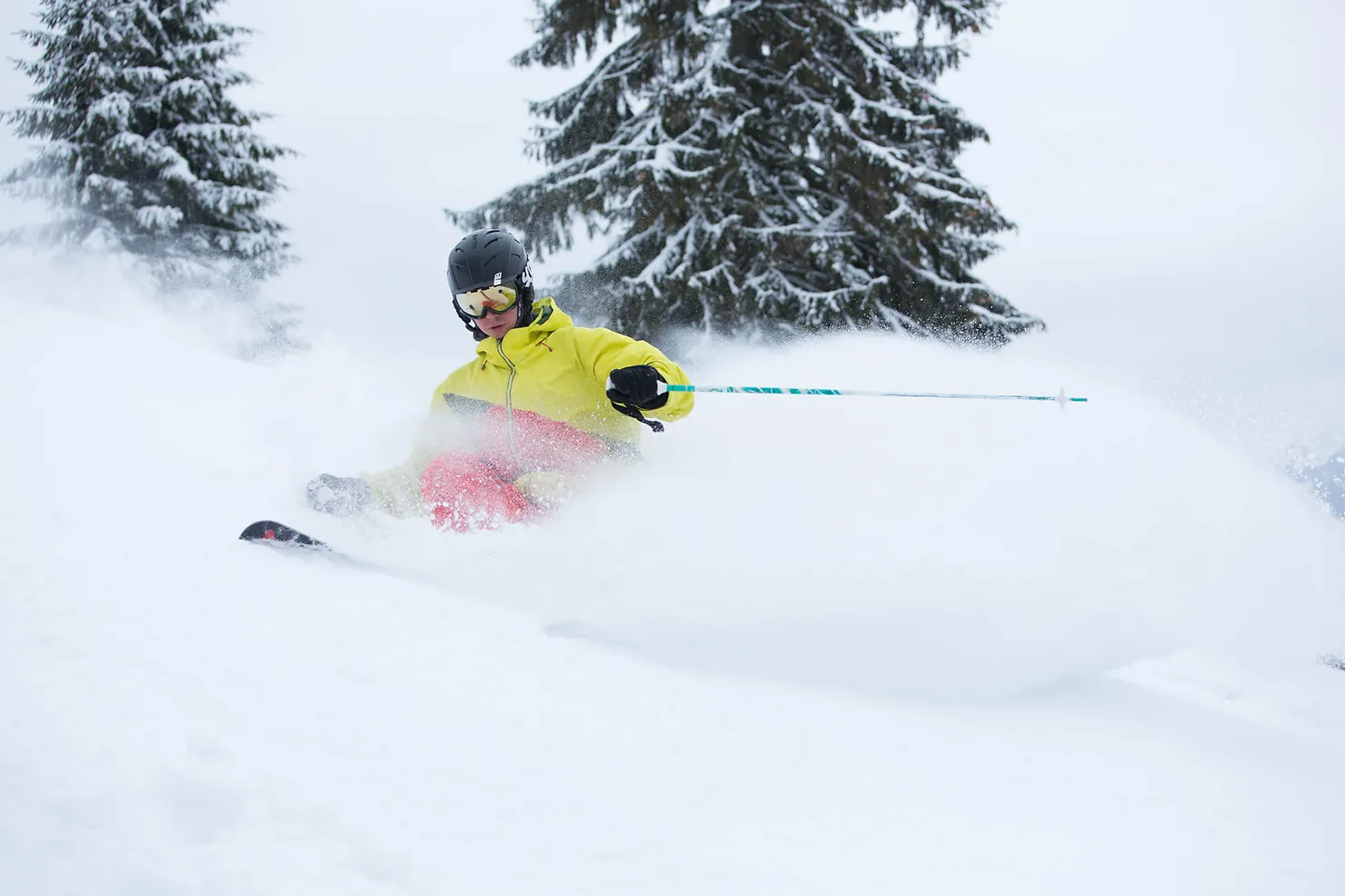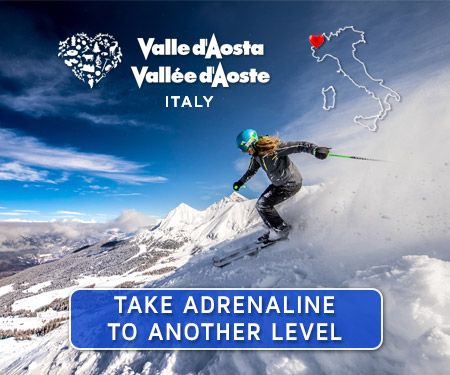Dan Lever
May, 18 2024- 5 mins
How to Ski in Deep Powder Snow
The mecca of skiing. This is what it’s all about! No more weaving down the piste trying to dodge other skiers. This is the feeling of freedom, the feeling of floating, with fresh powder snow swushing over your head. These are the days I live for - bring your snorkel!
Before you venture off piste in search of that untouched powder, you must ask yourself, are you prepared to become a beginner again? It’s a different type of skiing and requires a different technique! You may get the hang of it in a couple of hours or it may take you a little longer but read through the tips in this guide carefully, visualize what you need to do and act on them - you'll be shredding the gnar before you know it.

Before blindly venturing off piste to find the steepest, most powdery slope that you can, there are a few things for you to consider first.
Safety
You should always follow your resort’s guidelines and be aware of the avalanche risk. You should only ever ski off piste with the correct safety equipment and armed with the knowledge of how to use it. You should always ski with a group, ideally with a trained professional or ski guide. Read up and be knowledgeable on the terrain types and snow conditions that are safe to ski and what is higher risk.
Gear
Standard, more narrow piste skis do not perform as well in powder. They will sink more easily and may lead to your tips taking a plunge, in turn sending you over the handlebars. While falling in powder may be fun with a soft, buttery powder landing, ideally you should ski on some wider skis. A ski with at least a 100mm waist will make powder skiing a lot easier! Wider skis provide more surface area and help you float above the snow rather than sinking into it.
Terrain
When you are new to powder and skiing off piste for the first time, don’t just aim for the steepest slope that you can find - the avalanche risk is higher and you will have a hard time skiing a completely different set of conditions than you are used to, even if you can handle steeper runs on piste. Conversely, a powder-adorned slope that is not steep enough will be difficult to ski too - the powder snow on a gentle slope slows down your momentum and may bring you to a complete stop!
How to ski in deep snow
Now, for the fun part - skiing in powder! To be able to ski deep snow successfully, you must ski more ‘gently’ and really feel what you are doing. You need to be dialed in with your balance. You will find that the snow is always trying to ‘catch’ the outside edges of your skis when you try to turn them. You can’t just engage your edge angle and carve your turns in the same way that you would on piste.
Here are some introductory exercises that I would recommend to help you level up your powder skiing skills in no time at all:
-
Find a slope of fresh, untouched snow, steep enough to run down at a steady pace. Contrary to what you may be used to when skiing on piste, set off and move your weight slightly back and equal on both skis. Your weight should be slightly back from the middle of the foot, more towards the heal. As you improve, your weight can move forwards to the middle of your foot. Now, as you roll down the slope, carefully bounce up and down. Your skis should be about 4 inches apart and it should feel like you are bouncing up and down on a trampoline, as the snow compacts on the down movement and releases some tension to pop you back up on the up movement. It is this bouncing or floating effect that makes the feeling of powder skiing so magical. The snow needs to be at least knee deep and the right consistency to give you this floaty / bouncing feeling.
-
Try this exercise again but this time do alternate left and right pole plants as you move down the slope. Really dial into your balance and make sure that this feels in control. Think about the distance that your body moves up and down as you pump up and down in the powder snow. As you go down to put your pole in, your head should almost be level with your hand. Keep your upper body faced down the hill and keep both hands in front of you as you move down the slope. Down, left pole in, up. Down, right pole in, up. Left pole, right pole, left pole, right pole.
-
Now, to add in some turns! You may need a slightly steeper slope to start linking turns together. Stand at the top and try to visualize the rhythm of the previous exercise. Remember that your body must face downhill all the time, your weight must be equal on both skis and slightly back towards your heels with the skis remaining flat on the snow. 3, 2, 1, let’s gooooo! Weight on both skis. Go all the way down to put the right pole in. As you bounce up, jump the skis across the fall line while keeping the skis flat in the snow. While keeping the same rhythm, start to go down immediately for the next turn, in goes the left pole and jump up and around with the skis on the upward movement. Body facing down hill. Keep the skis flat. Keep the rhythm going and go all the way down each time. On every ‘up’ movement, you will be unweighting your skis to help you jump the skis across the fall line. As you progress and improve, you will be able to move down and up quickly, progressing into linked turns as you bounce and float your way down the mountain.
You are likely to tire yourself out very quickly while you try to keep your balance, work your knees, hips, stomach and arms, combined with elevated levels of concentration and adrenaline! Don’t be afraid to take regular breaks and take in the fresh mountain air to recover. When starting out, it can be a good idea to find a powdery slope to the side of the piste. When you find that you are chewing the snow more than linking turns, it could be an idea to hop back on the piste for a quick ego boost, before trying again. But don’t stay away for too long, good powder will get tracked out before you know it!
Summary
Let’s just reinforce the key points for learning to ski in the deep stuff:
- Keep your weight equally balanced on both skis (about 4 inches apart)
- Go right down to plant the pole
- Keep your upper body facing downhill all the time
- Keep a rhythm going as you bounce down the slope, with short linked turns (think window wipers)
- Be gentle. Try and turn too aggressively or put too much weight on one ski, then the snow snakes will get ya!






